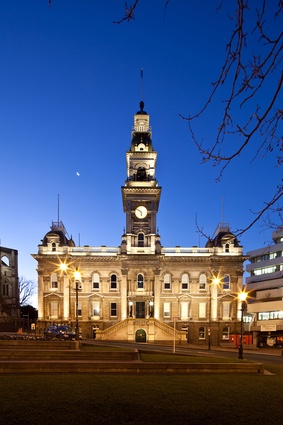A measured approach

Kevin McCloud fans will recall the Man Made Home television series where a sustainable eco-friendly shed was built entirely from materials available from the surrounding woodland while also utilising recycled materials to furnish and complete the development. I found this programme fascinating and was impressed by the clever ways that seemingly ordinary items could be transformed and adaptively reused for a different purpose. From a safe transformed into a log burner, old tractor linkages turned into deck chairs, through to the cowling from a jet engine converted into an outdoor spa - these were all intriguing examples of how, with some imagination, items can be adapted and reused to enrich our experiences of architecture and space. However, within the concept of adaptive reuse, the notion of recycle-up-cycle of single elements is at the micro-end of the spectrum. Broader consideration is now being given to the useable and adaptive reuse of entire buildings on a macro-scale.
Today, a greater question on the suitability of employing a philosophy of adaptive reuse to our ageing building stock must be played out in the response of architects, developers, regulatory authorities and politicians. New Zealand is still a relatively young country and our concentration of heritage buildings on a global scale is miniscule. Therefore, careful consideration should be given to the treatment of our heritage stock, but it is also vitally important that the consideration be appropriate and tempered by a commercial reality.
From a sustainability perspective, adaptive reuse of a complete building can tick a number of boxes. But, there are growing health and safety concerns surrounding the capture and disposal of harmful legacy building materials, such as asbestos, that reduce the sustainability outcomes and add construction complexities and costs.
In the South Island there is an interesting interplay happening that can best be described as a tale of two cities. On one hand, Christchurch has been robbed of its heritage buildings whilst on the other hand, many of the aged buildings in Dunedin go unoccupied due to a lack of growth in the local economy. Both cities are facing interesting and difficult questions on how to treat buildings that have been appropriated from their original occupants and use.
Typically, the fundamentals surrounding building strength form a basic catalyst for analysis and the resulting costs associated with strengthening becomes a contributing factor to the initial viability. From there, a discussion around development costs against heritage values are undertaken and developer returns are assessed to form an opinion on feasibility. In the case of civic buildings such as the Dunedin Town Hall, the answers have been one of preservation, adaptation and reuse, for which many would applaud and encourage for civic buildings of such importance.
Equally, the former Dunedin Chief Post Office building is undergoing a startling transformation as a place for both corporate offices and hospitality accommodation. The latter is set to rejuvenate the heritage precinct in Dunedin. This serves as a good example of what can be achieved when all of the positive conditions for adaptive reuse are met.
The opposite can be said for the Christchurch rebuild where construction costs and the feasibility of lease returns govern the viability. The decision to reuse heritage building stock is also further compounded by confidence issues regarding the safety of the heritage structures. In a utopian environment it might be ideal to rebuild, yet there would still be a question around the appropriateness of a ‘like-for-like’ restoration of heritage buildings or equally adapting these buildings for an alternate use versus adapting the land for reuse. There are as many opinions on the correct approach to reuse as there are options and concept plans to support them. It is up to the decision makers to take a holistic approach to the restoration, adaptation, and sustainable reuse of the total heritage stock, and where such buildings are of national significance, there are also owners that require a return from their investment.
As the population shifts, it is clear that the towns and cities of New Zealand are undergoing a transformation that requires a measured approach around the overarching questions surrounding the reuse of the ageing and heritage building stock. It would be naïve to suggest there is one solution for all buildings when it comes to adaptation, reuse or even restoration. It is also inappropriate to suggest all outcomes will be successful. But what is clear, is that a measured approach not preconditioned by perception, but tempered with common sense, will serve to provide the sustainable resolution to building occupancy for our future.











